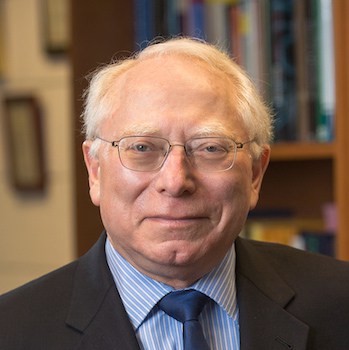Location
2428 Climate & Space Research Building
2455 Hayward Street
Ann Arbor, MI
48109-2143
Phone
Primary Website
Additional Title(s)
- Rollin M. Gerstacker Endowed Professor of Engineering
Related links
Education
- D.Sc., Physics, Hungarian Academy of Sciences
- Ph.D., Physics, Lóránd Eötvös University, Budapest, Hungary
- M.Sc., Physics, Lóránd Eötvös University, Budapest, Hungary
Professional Service
- American Association for the Advancement of Science
- American Geophysical Union
- American Physical Society
- Division for Planetary Sciences, American Astronomical Society
- European Geophysical Society
- Member, Basic Sciences Committee, International Academy of Astronautics
- Senior Editor, 1992-1997, Journal of Geophysical Research — Space Physics
- Chairman, Committee on Space Research, International Council Science, Commission D (Space Plasmas, including Planetary Magnetospheres), 1996-2000
- Chairman (1987-91) and Co-chairman (1979-87), The International Association of Geomagnetism and Aeronomy Division IV (Solar Wind and Interplanetary Magnetic Field)
- Extensive service to the Committee on Space Research, International Council Science, NASA and NSF
- Served on organizing committee or as chair of numerous major scientific conferences
Research Interests
Planetary science, space weather, heliospheric and magnetospheric physics, high-performance scientific computing.
- Physics Based Simulations of Space Weather
- Computational MHD Modeling on Solution Adaptive Grids
- Extended Hydrodynamics of Compressible Gases and Plasmas
- Physics of cometary environments
- Planetary Ionospheres and Magnetospheres
- Cosmic Ray and Superthermal Particle Transport
Awards
- John Adam Fleming Medal (the American Geophysical Union’s highest recognition in space science),
- Kristian Birkeland Medal for “outstanding scientific results in the field of Space Weather,”
- Van Allen Lecturer (each year the Space Physics and Aeronomy Section of the American Geophysical Union honors a leader at the forefront of Magnetospheric Physics by selecting them to give the James A. Van Allen Lecture at their Fall Meeting)
- External Member, Hungarian Academy of Sciences
- Konstantin I. Gringauz Distinguished University Professor of Space Science
- American Geophysical Union’s (AGU) inaugural Space Weather Prize
- Rollin M. Gerstacker Endowed Professor of Engineering
- Elected Lifetime Member, International Academy of Astronautics
- Fellow, American Geophysical Union
- Stephen S. Attwood Award (highest award of the College), CoE
- Team Excellence Award, CoE
- NASA Group Achievement Award (Cassini Orbiter)
- Research Excellence Award, CoE
- László Detre Award, Roland Lóránd Eötvös Physical Society, Budapest, Hungary
- Lajos Jánossy Award, Central Research Institute for Physics, Hungarian Academy of Sciences
- KFKI Award, Central Research Institute for Physics, Hungarian Academy of Sciences
- Albert Fonó Award, Hungarian Astronautical Society
- Member of international group which first measured the directional anisotropy of ~1014eV galactic cosmic rays
- With Russian colleagues, first to establish that during solar minimum conditions energetic electrons originating from the solar wind are responsible for maintenance of Venus’ nighttime ionosphere
- Pioneer in modern cometary plasma physics development
- Pioneer in modeling of the complicated physical process controlling the interface region between the comet nucleus and the continuously escaping cometary coma
- With colleagues, developed first-time dependent model of the terrestrial polar wind, which accounted for the dynamics and energetics of the transonic ion outflows from the high-latitude ionosphere
- Derived new transport equations from higher-order velocity moments of the Boltzmann equation using a non-isotropic Gaussian base-function
- Currently leading a computational Grand Challenge Investigation team developing a new generation of high-performance 3D MHD codes using solution adaptive grids
